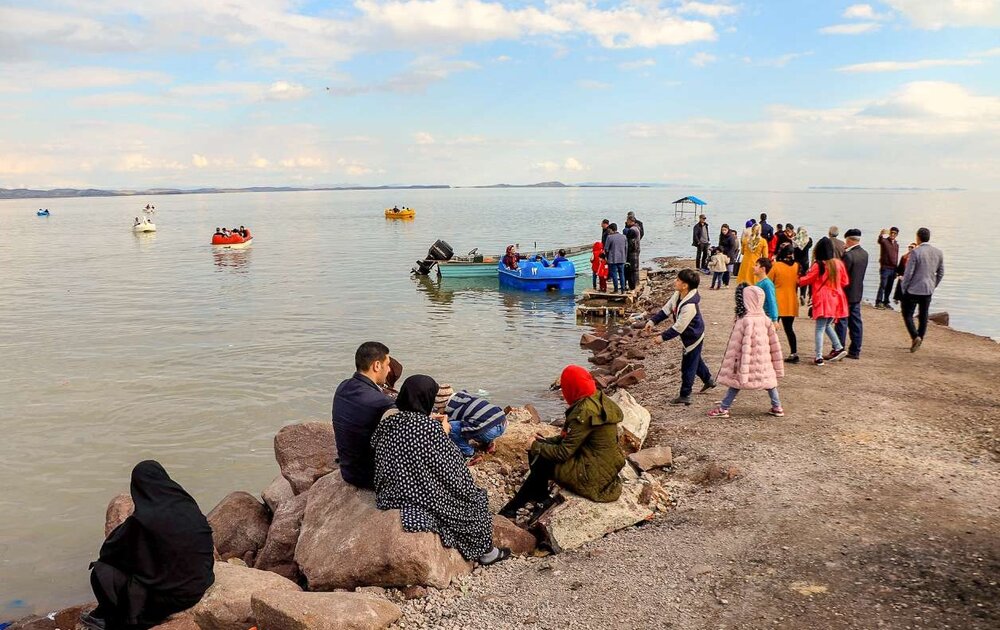Comprehensive tourism plan to be formulated for Lake Urmia

TEHRAN – Iran’s West Azarbaijan province aims to develop a comprehensive tourism plan to boost tourism around Lake Urmia, which was once the largest salt-water lake in West Asia.
West Azarbaijan’s deputy governor-general Aydin Rahmani on Monday attached great importance to promote water tourism in the province by reorganizing facilities along the lake.
“Considering the geographical potential of West Azarbaijan, which borders with three countries (Iraq, Turkey, and the Republic of Azerbaijan), developing tourism industry is one of our priorities in particular around the Lake Urmia,” Rahmani explained, IRIB reported.
The official also said studies will start to draw up a comprehensive tourism plan for the salt lake, adding: “Lake Urmia is one of God’s blessings in the northwestern region of the country that should be developed and prospered as soon as possible.”
He made the remarks in a meeting with several provincial and local authorities in which, provincial tourism chief Jalil Jabbari also underscored the capacity of private sector investors to reorganize tourism in Lake Urmia.
“Considering the recent amount of rainfall, which is deemed as appropriate, and increase of the water levels in Lake Urmia, we predict that it would draw more visitors this summer, and this is important.”
Back in December, the United Nations World Tourism Organization (UNWTO) advisor Marcello Notarianni in a meeting with Vali Teymouri, Iran’s deputy tourism minister, announced the UN body’s readiness to expand cooperation with the Islamic Republic in order to help it develop a comprehensive tourism plan.
Tourism, according to UNWTO, has experienced continued expansion and diversification over the past six decades, and it has become one of the fastest growing and most important economic sectors in the world, benefiting destinations and communities worldwide.
Since the beginning of the Lake Urmia Restoration Program in October 2013, a total of 4.6 trillion rials (more than $1 billion at the official rate of 42,000 rials) has been spent, according to Masoud Tajrishi, director of the planning office of the Lake Urmia Restoration Program.
Shared between West Azarbaijan and East Azarbaijan provinces in northwestern Iran, Lake Urmia, was once the largest salt-water lake in West Asia. It was home to many migratory and indigenous animals including flamingos, pelicans, egrets, and ducks, and attracted hundreds of tourists every year who had bathed in the water to take advantage of the therapeutic properties of the lake.
However, decades of long-standing drought spells and elevated hot summer temperatures that speed up evaporation as well as increased water demands in the agriculture sector shrank the lake drastically. In 1999 the volume of water which was at 30 billion cubic meters drastically decreased to half a billion cubic meters in 2013. Moreover, the lake surface area of 5,000 square kilometers in 1997 shrunk to one-tenth of that to 500 square kilometers in 2013.
These days, life has returned to Lake Urmia. The lake now has so much water that tourists can swim in its shiny water and birds and aquatic species such as flamingos and Artemia have returned to it, but we should not forget the hard days it went through. Lake Urmia still has a long way to completely survive, and neglect can threaten this precious gem of Iran again.
AFM/MG
Leave a Comment